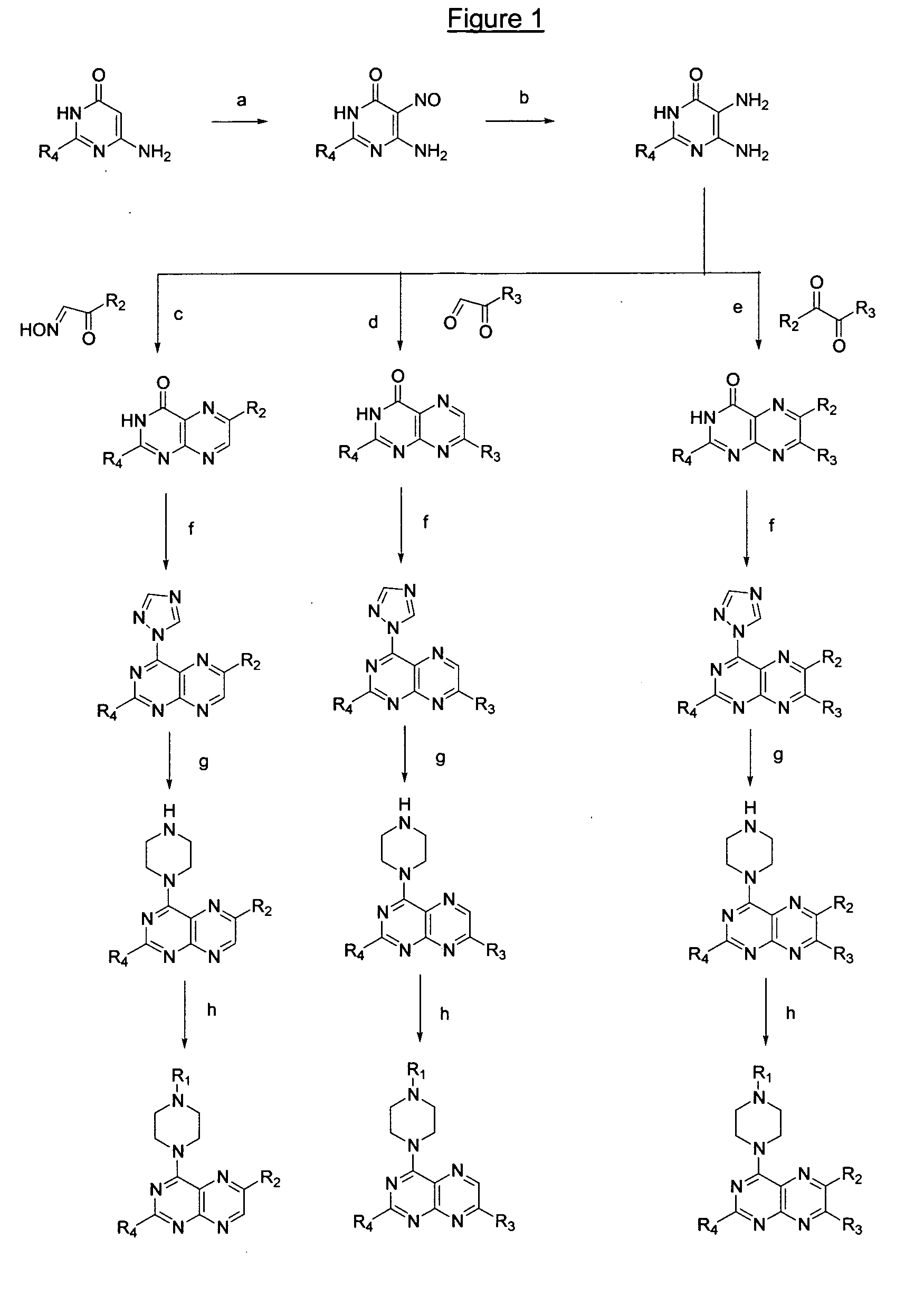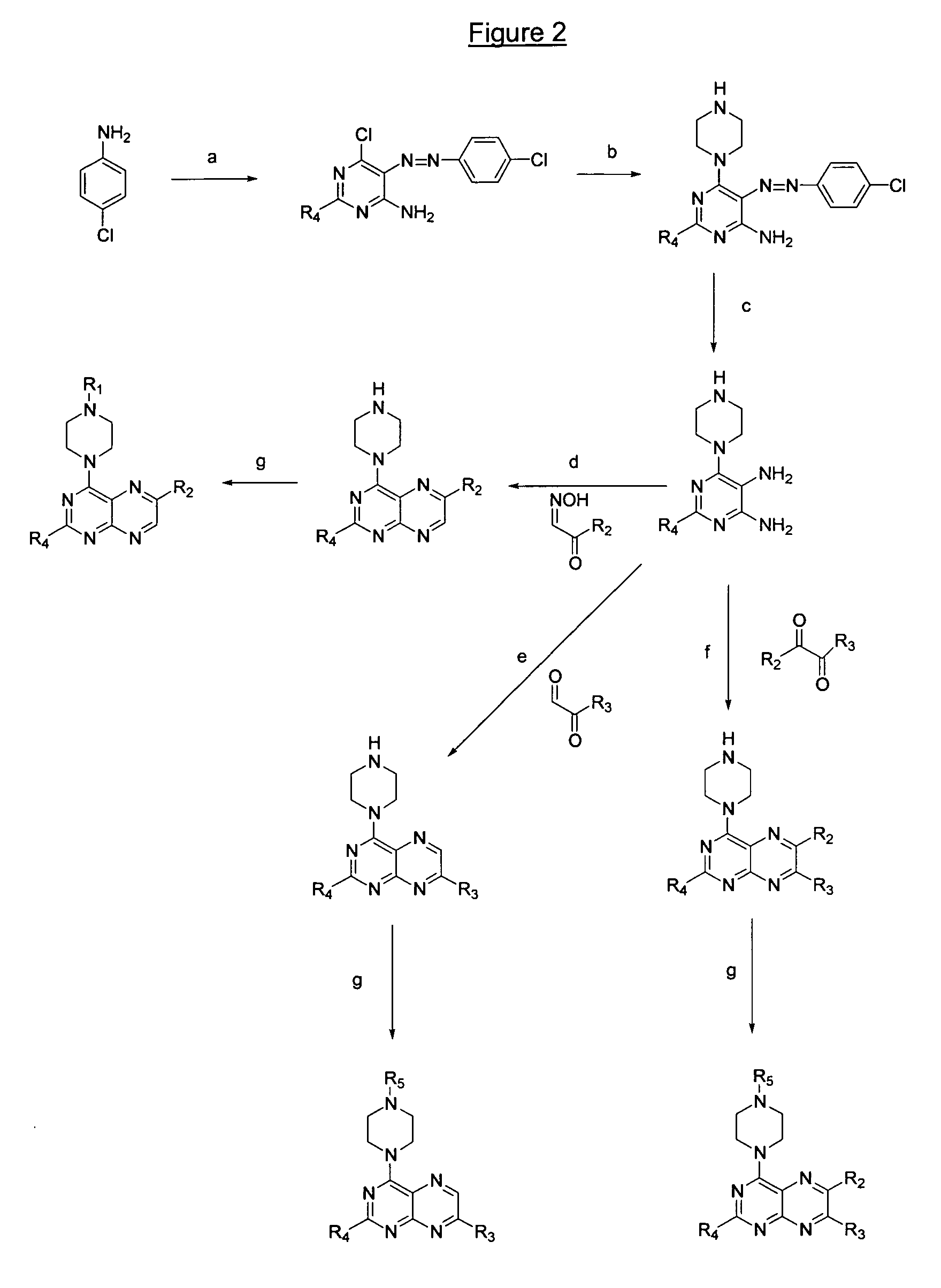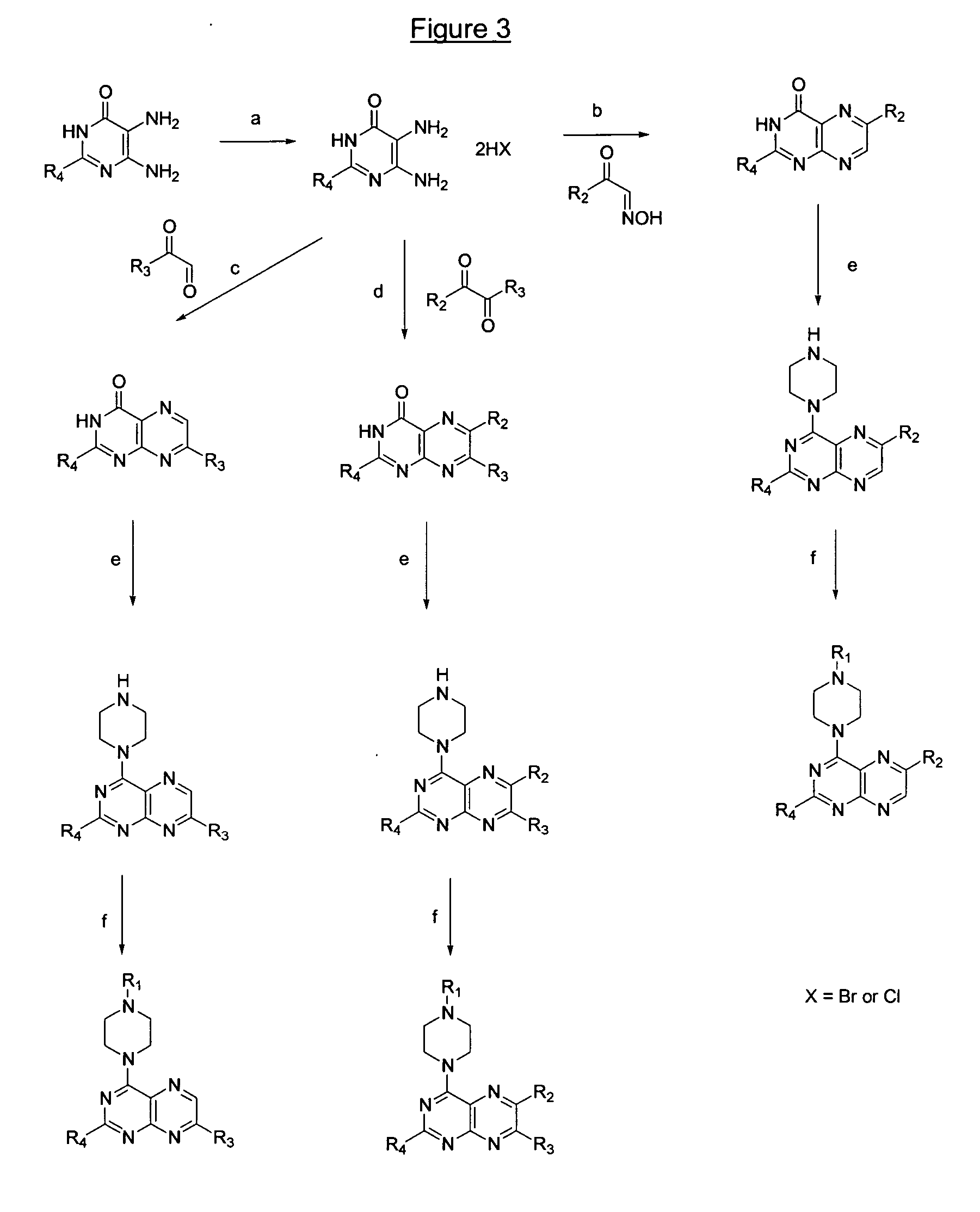Pteridine derivatives useful for making pharmaceutical compositions
a technology of pteridine and derivatives, applied in the field of pteridines, can solve the problems of high turn-over rate, marrow depression and liver damage, severe toxic effects on normal cells, and common side effects of pteridine derivatives, and achieve the effect of reducing symptoms of said disease and reducing evident damag
- Summary
- Abstract
- Description
- Claims
- Application Information
AI Technical Summary
Benefits of technology
Problems solved by technology
Method used
Image
Examples
example 1
Preparation of 2,6-diamino-5-nitroso-4-hydroxypyrimidine
[0415] The following illustrates the method step (a) shown in FIG. 1. To a solution of 2,6-diamino-4-hydroxypyrimidine (12.9 g, 102 mmoles) in 200 ml of a 10% acetic acid solution in water at 80° C. was added dropwise a solution of NaNO2 (7.05 g, 102 mmoles) in 20 ml water. A pink precipitate was formed, which was further stirred for 1 hour at 80° C. The reaction mixture was cooled down in the refrigerator overnight. The precipitate was filtered off and dried over P2O5, yielding the title compound as a pink powder (15.43 g, 97%). Its spectral data are in accordance with literature data (Traube in Ber. (1900) 33:1371 and Landauer et al. in J. Chem. Soc. (1953) 3721-3722.
example 2
Synthesis of 2,5,6-triamino-4-hydroxypyrimidine
[0416] The following illustrates the method step (b) shown in FIG. 1. A suspension of the compound of example 1 (15 g, 96.7 mmoles) in an ammonium sulfide solution (20% in water, 200 ml) was stirred overnight at 50° C. The reaction mixture was cooled down in the refrigerator and the formed precipitate was filtered off, yielding the title compound as a yellow powder (11.33 g, 83%). The spectral data are identical with literature data (same as for example 1).
example 3
Synthesis of 3,4-dimethoxyphenylglyoxalmonoxime
[0417] In a mixture of dioxane (250 ml) and water (10 ml), SeO2 (0.33 mole) was heated to 50° C. After solution of SeO2, 3,4-dimethoxyacetophenone was added and the mixture heated under reflux for 16 hours. The hot solution was filtered to remove selenium. The filtrate was evaporated, the oily residue dissolved in CHCl3 (300 ml), then washed with saturated NaHCO3 solution (100 ml) and water. The organic phase was dried over Na2S2O4, filtered and evaporated. The yellow oil was distilled in vacuum, the resulting 3,4-dimethoxyphenylglyoxal was dissolved in MeOH (50 ml) and water (200 ml), then acetonoxime (0.25 mol) was added and the pH adjusted to 4 by 2 N HCl. The solution was heated to 50° C. for 2 hours, then cooled to 0° C. and the resulting crystals collected. After washing with cold water and drying in a vacuum desiccator, 3,4-dimethoxyphenylglyoxalmonooxime was obtained with a yield of 71%. Recrystallization can be achieved from C...
PUM
| Property | Measurement | Unit |
|---|---|---|
| Body weight | aaaaa | aaaaa |
| Body weight | aaaaa | aaaaa |
| Cell angle | aaaaa | aaaaa |
Abstract
Description
Claims
Application Information
 Login to View More
Login to View More - R&D
- Intellectual Property
- Life Sciences
- Materials
- Tech Scout
- Unparalleled Data Quality
- Higher Quality Content
- 60% Fewer Hallucinations
Browse by: Latest US Patents, China's latest patents, Technical Efficacy Thesaurus, Application Domain, Technology Topic, Popular Technical Reports.
© 2025 PatSnap. All rights reserved.Legal|Privacy policy|Modern Slavery Act Transparency Statement|Sitemap|About US| Contact US: help@patsnap.com



